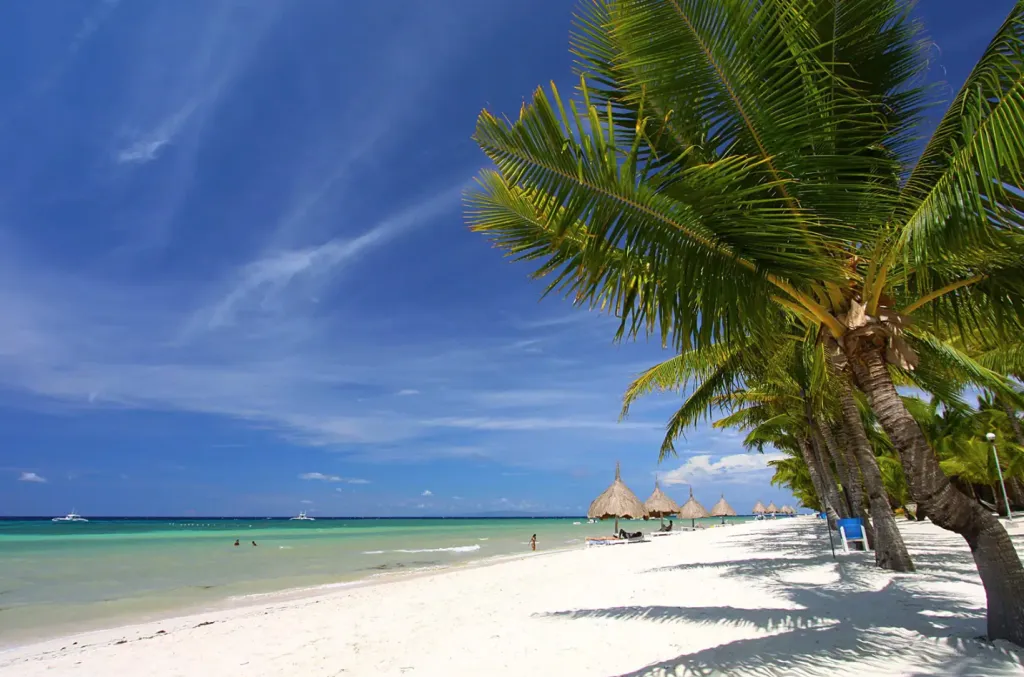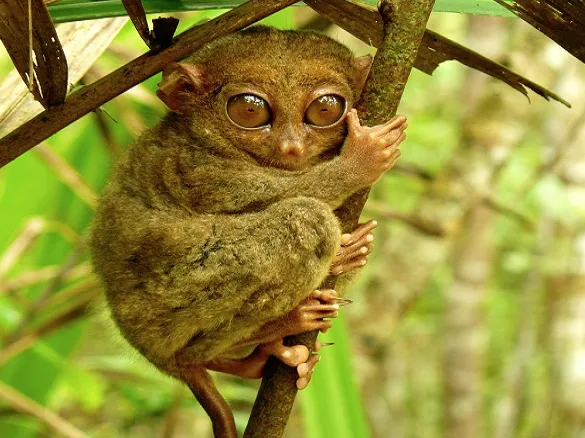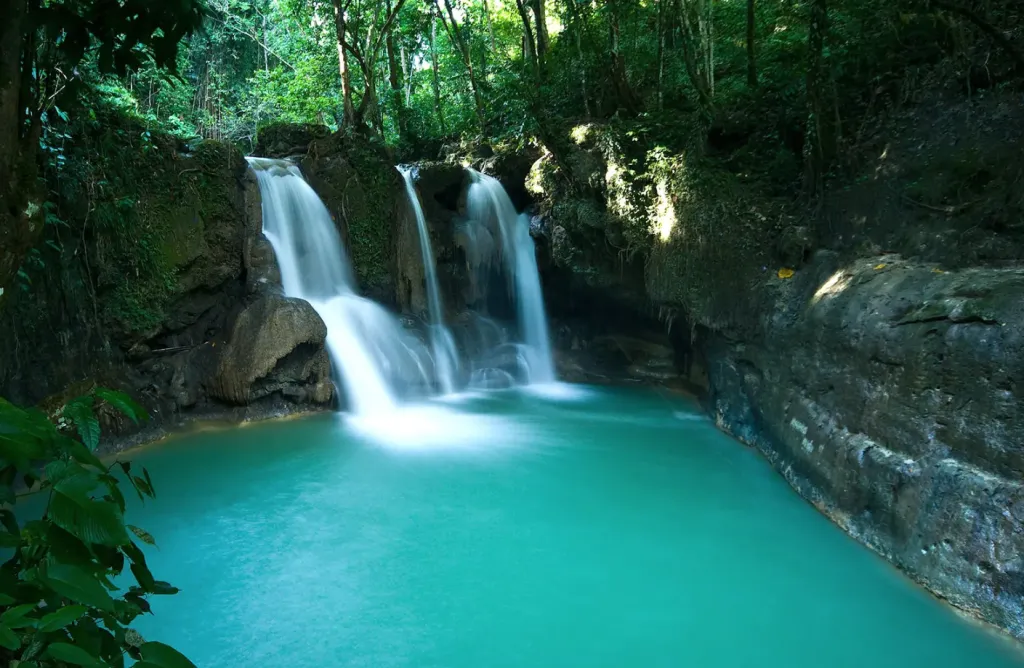Bohol, a hidden gem in the Philippines, is not only famous for its unique natural wonders but also an ideal destination for eco-tourism enthusiasts. Here, the harmony between pristine natural beauty and rich biodiversity creates a vibrant eco-tourism tapestry filled with memorable experiences. From the magnificent Chocolate Hills, the fine white sand beaches of Panglao Island, to the rare Tarsier Sanctuary, Bohol unveils a world of exciting and meaningful nature exploration. Join “Travel the Globe” on a journey to discover the unique eco-tourism experiences that Bohol Island offers, where you don’t just travel but live with nature and local culture.
Bohol – An Eco-Tourism Paradise Awaits
Bohol Island, part of the Visayas archipelago in the Philippines, is not only a beautiful land but also a model for sustainable eco-tourism. With 75 small islands surrounding the main island of Bohol, it boasts an incredibly diverse ecosystem, from lush rainforests and vibrant coral reefs to unique wildlife. This richness has made Bohol a leading eco-tourism destination, attracting visitors from all over the world seeking close-to-nature experiences and contributing to environmental conservation.
Eco-tourism in Bohol is not just about admiring natural beauty but also an opportunity for visitors to learn about the importance of preserving biodiversity and local culture. The government and people of Bohol have been striving to develop tourism sustainably, ensuring that the island’s beauty is preserved for future generations. When you come to Bohol, you will not only enjoy stunning landscapes but also experience responsible tourism activities, contributing to the sustainable development of this island.
Must-Visit Eco-Tourism Spots in Bohol
1. Chocolate Hills – A Unique Geological Wonder
Chocolate Hills, one of the most unique and famous geological wonders of the Philippines, consists of over 1,700 cone-shaped hills spreading over an area of over 50 km², creating an incredibly impressive landscape. The name “Chocolate Hills” comes from the grass on the hills turning chocolate brown during the dry season, creating a special and captivating scene.
From an eco-tourism perspective, Chocolate Hills is not only a beautiful landscape but also a unique ecosystem. The hills are covered with characteristic vegetation, home to many native animals and insects. Preserving Chocolate Hills not only preserves a natural wonder but also protects a valuable ecosystem. Visitors can explore Chocolate Hills by hiking or mountain biking, discovering the natural beauty and learning about the unique geological formation of this area.

2. Panglao Island – A Marine Paradise
Panglao Island, located southwest of Bohol, is known as a marine paradise with incredible biodiversity. It is not only famous for its long white sand beaches and crystal-clear waters but also an ideal destination for marine eco-tourism activities. The coral reefs surrounding Panglao Island are among the most diverse coral reef ecosystems in the Philippines, attracting countless diverse marine species.
Visitors to Panglao can participate in snorkeling and diving activities to explore the beauty of the underwater world, admire the vibrant coral reefs and colorful fish. Many eco-tourism tours in Panglao focus on protecting coral reefs, guiding visitors to dive responsibly, avoiding harm to the marine environment. In addition, visitors can also participate in activities such as kayaking, windsurfing, or simply relax on the beach and enjoy the fresh sea air.

3. Tarsier Sanctuary – Home to the World’s Smallest Primate
The Philippine Tarsier Foundation Wildlife Sanctuary is a must-visit destination for nature and wildlife lovers. Tarsiers are small and rare primates found only on a few islands in Southeast Asia, including the Philippines. This sanctuary was established to protect tarsiers from the risk of extinction due to habitat loss and illegal hunting.
Visiting the Tarsier Sanctuary, visitors have the opportunity to observe tarsiers in their natural habitat. Sanctuary staff will provide information about this species, ongoing conservation efforts, and how visitors can contribute to conservation. Visitors can join eco-walking tours in the sanctuary, learn about the forest ecosystem and other flora and fauna that coexist with tarsiers. This is an educational and meaningful experience, helping to raise awareness about biodiversity conservation.

4. Abatan River Mangrove Forest – Explore a Diverse Ecosystem
The Abatan River and its riverside mangrove forest are a unique and important ecosystem of Bohol. Visitors can take a boat tour on the Abatan River to explore the beauty of the mangrove forest, observe water birds and marine life in their natural environment. The mangrove forest is not only a beautiful landscape but also plays an important role in protecting the coastline, filtering water, and serving as a breeding ground for many aquatic species.
Eco-tourism tours on the Abatan River often combine with learning about the lives of local communities living along the river, who have a close relationship with the mangrove forest. Visitors can participate in activities such as traditional fishing, learn about local handicrafts, and enjoy local riverine cuisine. This is an opportunity for visitors to experience community-based tourism, support local livelihoods, and contribute to the conservation of the mangrove forest ecosystem.
5. Mag-Aso Falls – Immerse Yourself in Wild Nature
Mag-Aso Falls, located in the heart of Antequera, is an ideal destination for those who want to immerse themselves in wild nature and enjoy fresh air. This waterfall is beautiful not only for the water flowing down from above creating a magical mist (“Aso” in Visayan means smoke) but also for the surrounding green forest landscape.
The Mag-Aso Falls area has been developed into an eco-tourism area with stone steps leading down to the falls, facilitating visitors to visit and explore. Visitors can swim under the waterfall, hike in the forest, or simply relax and enjoy the sounds of nature. This area is also home to many species of birds and wildlife, offering opportunities to observe diverse nature.

Meaningful Eco-Tourism Experiences in Bohol
Eco-tourism in Bohol is not limited to visiting famous destinations but also opens up profound and meaningful experiences. You can choose to stay at eco-friendly resorts, participate in community-based tours organized by local people, or explore trekking and cycling routes in nature on your own.
When practicing eco-tourism in Bohol, remember to always respect nature and local culture. Minimize the use of plastics, maintain environmental hygiene, do not disturb wildlife, and support local handicrafts. By traveling responsibly, you will not only have wonderful experiences but also contribute to preserving the beauty of Bohol for future generations.
Conclusion
Bohol Island, with its pristine natural beauty and rich biodiversity, is truly an eco-tourism paradise waiting for you to explore. From the magnificent Chocolate Hills, the vibrant coral reefs of Panglao Island, to the rare Tarsier Sanctuary, each destination in Bohol offers unique and meaningful eco-tourism experiences. Come to Bohol to discover the beauty of nature, learn about local culture, and contribute to the sustainable tourism development of this beautiful island. Are you ready for a memorable eco-tourism journey in Bohol? Share your plans with “Travel the Globe”!